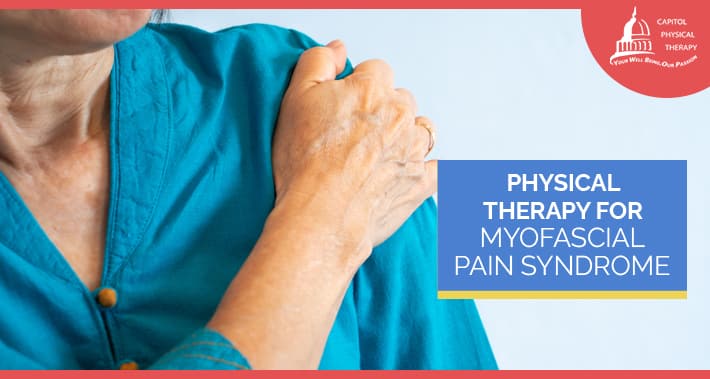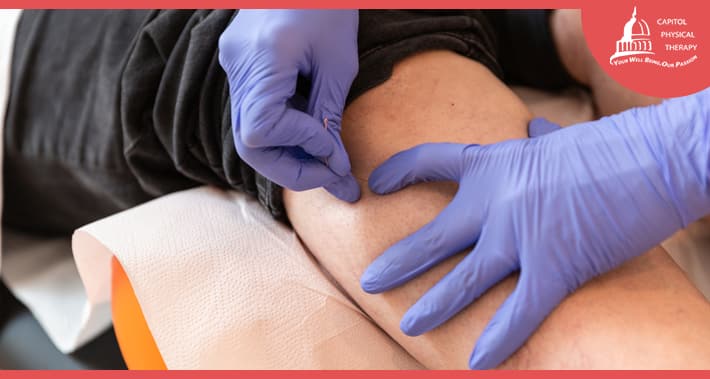
There are a number of conditions that physical therapy can help with.
Some of the more common ones that come to mind are osteoporosis, or osteoarthritis.
Osteoporosis is a condition that more often affects women, and so if this is a concern, you’ll want to go to a clinic that offers physical therapy for women’s health issues.
You might also consider physical therapy if you’re having shoulder pain or lower back pain.
Your physical therapist can help to identify what is causing your pain.
Then, they will create a treatment plan to relieve your symptoms and manage your pain, naturally.
Myofascial pain syndrome is a chronic condition that requires ongoing maintenance to manage pain.
Physical therapy is a great treatment option to consider.
Your physical therapist can provide specialized treatment in person, as well as recommend exercises for you to continue at home in between sessions.
This way, you can start to feel better, faster.
Remember to make sure that the physical therapy clinic you’re considering for treatment is experienced in chronic pain physical therapy.
Now, let’s explore more about myofascial pain syndrome and how a physical therapist can help.
What Is Myofascial Pain Syndrome?
Myofascial pain syndrome is a painful, chronic neurological condition which affects your musculoskeletal system.
Your musculoskeletal system includes your bones, ligaments, cartilage, tendons and connective tissues.
Myofascial pain syndrome includes sensitive spots, also known as trigger points, which develop in your fascia.
Your fascia are the tight, ropey bands of your muscles.
When pressure is applied to these points, you’ll feel pain in different parts of your body.
Myofascial Pain Syndrome Symptoms
Generally, if you have myofascial pain syndrome, the main symptom you’ll have is persistent, muscular pain.
Some ways this can manifest include:
- Pain that worsens when the affected muscle is strained or stretched
- Deep pain in particular areas of muscles
- Painful muscular knots that act as trigger points
- Mood or sleep challenges
- Weak, stiff, inflexible muscles with a reduced range of motion
What Causes Myofascial Pain Syndrome?
Studies have recently shown that there is no single factor responsible for the development of myofascial pain syndrome.
It can sometimes result from overusing your muscles, injury to your muscles, or even psychological stress.
Physical therapy for sports injuries will sometimes include treatments for myofascial pain syndrome as a result.
Repetitive activities like lifting heavy objects at work or sitting at a desk all day can trigger it, making it an ergonomics issue as well.
Some other factors include:
- Poor posture
- Nutritional deficiencies
- Extreme lack of exercise or movement
- Lack of sleep
- Musculoskeletal or intervertebral disk injury
- Extreme fatigue
- Mental health challenges like depression or anxiety
- Obesity
- Smoking
- Conditions causing inflammation like rheumatoid arthritis
Is Myofascial Pain Syndrome And Fibromyalgia The Same?
Any persistent pain and fatigue in your musculoskeletal system is typically either myofascial pain syndrome or fibromyalgia.
Because of their similarities, it’s easy to mix them up.
And in fact, physical therapy for fibromyalgia and for myofascial pain syndrome have some overlap with each other.
The main difference is that myofascial pain syndrome has a persistent, localized pain in particular muscle groups.
Fibromyalgia is characterized by widespread muscular pain and tender points that don’t trigger different parts of your body.
These tender points are very different from the trigger points of myofascial pain syndrome.
How Can Physical Therapy Treatments For Myofascial Pain Syndrome Help?
There are a number of ways physical therapy treatments can help with myofascial pain syndrome.
These are backed by recent studies that indicate that physical therapy had great effects for patients.
The exact results varied depending on the type of treatment patients received.
It’s your physical therapist’s job to evaluate your condition and determine which treatments will be the most effective for you.
Let’s dive into some common strategies used in physical therapy for neurological conditions like myofascial pain syndrome to help provide relief.

1. Stretches For Myofascial Pain Syndrome
There are stretches your physical therapist can show you to target your trigger points, improve posture, and unbind your muscle knots.
It’s important that you work with an expert because they’ll know how much to stretch you without adding strain to avoid potentially worsening the problem.
They will also provide you with the appropriate knowledge to continue your treatment plan in between sessions.
2. Posture Training For Myofascial Pain Syndrome
Your physical therapist can teach you proper posture techniques in order to ease any tension in your neck and lower back.
This will also help to reduce your back pain and can be very helpful if your poor posture is contributing to your myofascial pain syndrome.
3. TENS For Myofascial Pain Syndrome
TENS is a high frequency transcutaneous electrical nerve stimulation that targets sensory nerves to interfere with pain signals.
This interference provides relief and reduces tightness in the muscle, as well as local inflammation.
It also enhances blood circulation and promotes correct muscle contraction.
Your physical therapist can provide this treatment at your sessions.
4. Dry Needling For Myofascial Pain Syndrome
Dry needling physical therapy treatments are quick treatments that can deactivate your myofascial trigger point.
Your physical therapist will insert a tiny needle directly into your trigger point.
Then, they’ll move it around, and piston it in and out.
This treatment can be a little intense, but it’s nowhere near as bad as it sounds.
It’s also one of the most efficient ways to reduce your pain by deactivating a trigger point.
5. Exercises For Myofascial Pain Syndrome
Finally, there are a number of exercises your physical therapist can show you to help with your myofascial pain syndrome.
Strength and endurance training seems to reduce the potential for muscle spasms and improve your range of motion, which can reduce pain.
These will typically be activities you can continue to do on your own in between sessions with your physical therapist in order to keep working on your pain management.
Book Your Appointment With Capitol Physical Therapy Today
There are a number of very helpful techniques your physical therapist can recommend to you in order to reduce the pain associated with myofascial pain syndrome.
They will tailor their recommendations to your needs so that you can feel better sooner.
Remember, consistency is key.
Sticking to your treatment will result in better management of your myofascial pain syndrome.
Book your appointment with Capitol Physical Therapy today.
1331 H St NW #200,
Washington, DC 20005
- https://g.page/capitolptdc
9560 Pennsylvania Ave. # 202,
Upper Marlboro, MD 20772
- https://goo.gl/maps/zjL4NnnuThRhrcS86
Capitol Physical Therapy offers orthopedic and other pain related solutions, with our versitile team of physical therapists in Washington, DC